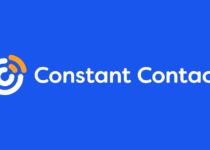Getresponse Review
GetResponse Review – What Is GetResponse?
GetResponse is a digital marketing platform and a competitor of solutions such as AWeber and Campaign Monitor. The GetResponse platform is built around email marketing automation – that is, it allows digital marketers to automate the delivery of emails to their audiences thanks to scheduling capabilities.
Apart from email marketing automation, GetResponse also offers a sales funnel builder, a landing page builder, and webinar builder, among other things.
GetResponse Features & Functionality
Although primarily focused on email marketing, GetResponse has a number of additional features to facilitate e-commerce and online promotion. Find a general overview of the platform’s major features below.
Note: Feature availability may vary depending on the subscription plan.
Email marketing & automation
Email marketing and marketing automation are the foundations of GetResponse. At a glance, some of the email marketing major features in GetResponse are:
- Newsletters with updates and special offers.
- Autoresponders that allow marketers to send follow-up emails and nurture their audiences.
- Action-based automated emails sent when followers take a predefined action.
- Abandoned cart reminder emails.
- Automated blog digests via email and social media.
- Transactional emails to send receipts or reminders.
Emails are created via a drag & drop email builder. GetResponse offers free stock photos, GIFs, and email templates to improve email visual presentation and speed up email composition.
Subscribers may be segmented as well based on behavioral data. Being groups of users with similar interests, segments allow for more personalized email campaign targeting.
GetResponse also provides marketers with insight into email campaign performance via its email analytics platform. Among other things, the analytics dashboard shows click-through rates (CTRs), email opens, unsubscribes, and mobile vs desktop performance.
GetResponse allows digital marketers to create several types of funnels, including simple opt-in funnels, lead magnet funnels, sales funnels, or webinar funnels. Marketers may make use of predefined funnel templates, or they may build a sales funnel themselves with components such as customizable and shareable signup forms and exit-pops.
The primary difference between the plans lies in the limits to the number of webinar attendees, sales funnels, and automation workflows. GetResponse Max offers enterprise-aimed features, such as dedicated support, multiple accounts & users, and team management.
There are other differences as well – review them on the GetResponse website.
Subscriptions may be purchased for a month, 12 months, or 24 months. 12- and 24-month subscriptions offer 18% and 30% savings respectively compared to the monthly subscription.
GetResponse list sizes range from 1,000 to 100,000 subscribers. With Basic, Plus, and Professional packages, every 1,000 followers over 100,000 incur an extra fee of $4.00. This fee is charged every 30 days, even if the user has a 12- or 24-month subscription plan.
Unlike AWeber, GetResponse doesn’t have a free plan, but it has a 30-day free trial. No credit card information is required for the trial.
GetResponse Review – Conclusion
To find more information about the features and pricing of GetResponse, visit its official website. The GetResponse YouTube channel also contains video guides on the platform’s major features.


